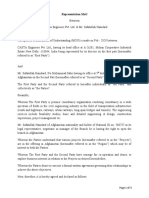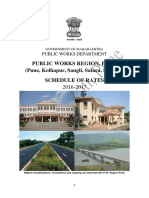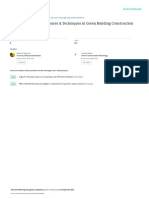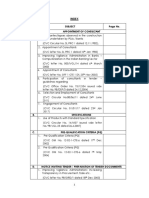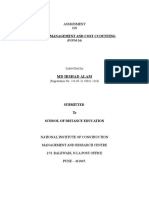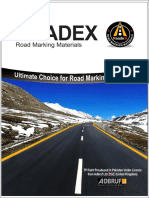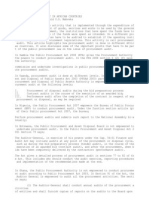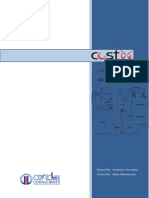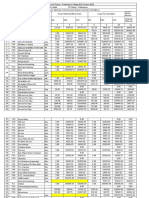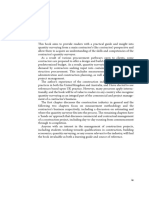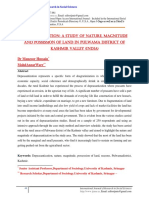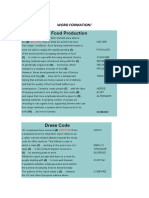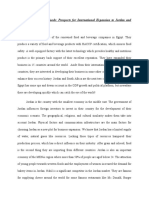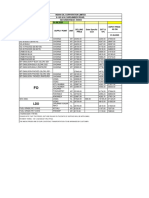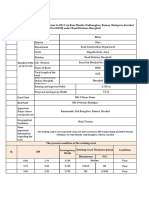Road classification in Nepal
Posted on 24/04/2013by roadnotes
Background
Nepal has a population of 26.5 million, making it more populous than (for example) Australia and Taiwan.
Nepal has an area of 147,181 sq.km and covers three very different main geographical regions. These strongly affect the quality and
quantity of the transport networks. More than one-third of Nepal’s people live at least a two hours walk from the nearest all-season
road; 15 out of 75 district headquarters are not connected by road. In addition, some 60% of road network and most rural roads are
not operable during the rainy season (from Wikipedia).
The country is divided into 5 development regions, 14 zones and 75 districts. The districts are required to prepare “district transport
master plans”.
Geography
Nepal can be divided into three belts: Terai, Hill and Mountain Regions. The Terai (plains) region covers 17% of the area of Nepal
and is home to about 48% of Nepal’s population. It provides excellent farming land, has a reasonable road network, and is the region
where most of the country’s manufacturing industries are based. Average elevation is 100 to 300 metres above sea-level. The Hills
region contains 68% of the Nepalese land. The altitude ranges between 600m. to 4877 m. Altogether 39 of the 75 administrative
districts are within this region. The Mountain region is the northernmost region of the country and accounts for 15% of the total land
of Nepal. Its altitude ranges between 4,877 m. to 8,848 m. The northern 16 districts of Nepal are mostly within this region (source:
see e.g. here).
Road classification
There are three road networks in Nepal,
Strategic roads
Urban roads
Local roads
Strategic roads
The Strategic Road Network (SRN) has a total length of about 14,490 km and is made up of national and feeder roads (ref.
559). The SRN ” consists of 3 main east west corridors and several north south corridors. The east west corridors are: (i) East West
Highway (EWH, 1,024 km), the main artery of SRN with heavy traffic located in the Terai region; (ii) postal roads running in parallel
with EWH along the Indian border in the south; and (iii) Mid-Hill East-West corridor (MHC), a series of feeder roads that link mid
hill districts and provide routes to the main centers in the hills, including Kathmandu and Pokhara”.
(ref. 556) says that “Feeder roads are important roads of a more localised nature than National Highways. Feeder roads are classified
into Feeder Roads (Major) and Feeder Roads (Minor).”
Urban roads
The “Nepal urban road standards 2068 (draft)” (ref. 472) says that: For the purpose of geometric design urban roads are classified
into five categories considering function of the road and traffic level:
1. Expressways
2. Arterial
3. Sub-arterials
4. Collector streets
5. Local streets
Rural roads
The DoLIDAR document “Nepal rural roads standard(2055)- (ref. 508) says that the local road network (LRN) for rural roads has
two classes of road
District roads (the core road network). These are roads joining a VDC HQ office or nearest economic centre to the district
headquarters via either a neighbouring district headquarters or via the Strategic Road Network. It is to consist of all-weather
roads. (Note: VDC stands for village development committees, which are the lowest administrative part of Nepal’s local
development ministry. For more, see here).
Village roads, including other agriculture roads.
Other road classifications in Nepal
The Nepal Investment Board says there are two broad classifications of roads in Nepal: Classification on the basis of strategic
importance and on the basis of quality of roads.Roads on the basis of quality consist of:
Sealed road
graveled roads
unsealed roads
The Master plan for the strategic road network 2002 – 2022 (ref. 451) gives the road classification as below and says this
classification is based largely on functional and administrative requirements.
National highways
Feeder roads
District roads
Urban roads
Village roads
The Rural road technical design manual (ref. 450) speaks of
Trails
� Fair weather track FWT
All weather track AWT
Fair-weather road FWR
All-weather road AWR
Annex II-2 of the Nepal rural road standard (2055) (ref. 460) says rural links are classified according to
Function of the linkage
Level of users
Traffic volume
Topography
The document also says that rural transport linkages in Nepal are classified into 5 classes,
Road category
Rural road class A – district road
Rural road class B – village road
Trail category
Rural road class C – main trail (defined as non-motorable foot or mule trail)
Rural road class D – village trail (defined as non-motorable foot or mule trail)
Ropeway category
Rural road class E – ropeway
The Lalitpur district transport master plan (ref. 473) has the following classification for its transport linkages:
District roads
Village roads
Main trails
bridges
A study to map the historically important trade routes in the Nepal region (ref. 507) refers to routes of trails (not roads)
which can be classed as including
routes with local function
routes with regional function
routes with over-regional function
Possible overall classification of roads in Nepal
Other notes
Road classification and road networks are related to the types of vehicle which they are designed to carry. For Nepal these vehicle
types include various types of motor vehicle, and as many as ten types of non-motorised transport (NMT). The NMT include
rickshaws and tricycles carrying goods, pack animals, and porters.(see e.g. ref. 508, table of passenger car units).
�The road network in Nepal appears to be very much under-developed. For example (ref. 504) says that
10 million people live more than two hours walk from the nearest road and in the hills and mountains, more than 30% of
the population live more than four hours walk from a road
Maintenance is largely absent leading to half of rural roads being unusable
The Government of Nepal has accessibility targets, namely to bring the entire hill population within a four hour walk to an all season
road and the Terai population within two hours. Also, only 6.27% of Nepal households “own” a motorised vehicle (from World Bank
website, “Nepal transport sector”).




